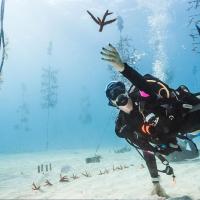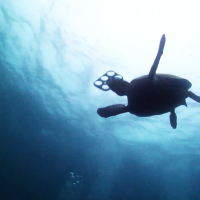The deepest depths of the ocean floor are finally being explored thanks to autonomous underwater vehicle (AUV) technology. These underwater drones are helping researchers learn more about our most important, and least understood, natural resource.
Space has long been considered man’s final frontier, but until recently, detailed exploration of the ocean floor has been virtually impossible. “We know only about 5 to 7% of our ocean floor… So we know less about the ocean than we know about the surface of Mars,” says Stefano Brizzolara of Virginia Tech’s Aerospace and Ocean Engineering program.
The average depth of the ocean is over 12,000 feet with its deepest point, known as the Challenger Deep, being approximately 36,200 feet deep. These depths have provided serious barriers to exploration due to their extreme pressures and lack of light. The deep ocean is pitch-black with no internet connection, no cell service, and no GPS.
Any vehicle attempting to traverse it must be able to withstand otherworldly pressure, provide its own illumination and navigate without direct human supervision.
What Is an AUV?
An AUV is an underwater drone capable of accomplishing these feats. Being designed to operate independently of humans gives AUVs a supreme advantage over submarines – they can be built much smaller and more efficiently. Plus, their advanced technology allows for quicker and more precise exploration of deep oceanic terrain.
AUVs have helped researchers discover shipwrecks, collect valuable oceanographic data, and uncover new natural resources. They’re also capable of mapping the ocean floor, which can provide crucial understanding about the mechanisms of climate change.
Because of the depths that AUVs travel to, communicating information to researchers above can be an issue. Josh Broussard of Ocean Infinity, a marine robotics company on the cutting edge of utilizing AUV technology, explains, “The amount of information you can send through water columns is really, really small.”
But now, a new technology known as collaborative autonomy is helping skirt this limitation.
Collaborative Autonomy is Key
Collaborative autonomy is essentially when a group of AUVs work together with minimal supervision. Under collaborative autonomy, machines can communicate with each other on the ocean floor and make adjustments to their mission if necessary.
The idea isn’t simply to program the drones to operate simultaneously; it’s getting them to work cooperatively. The AUVs are capable of sharing information and jointly making decisions about what to do next.
Broussard explains, “If AUVs collaborate together, your spatial awareness improves, your navigation improves, and you can re-task a vehicle based on information that another one may have collected.”
One impressive example of collaborative autonomy in use was during the 2018 search for Malaysia Airlines Flight 370, which went missing four years prior. Ocean Infinity partnered with the Malaysian government in an attempt to locate the aircraft, which was believed to be located in an especially remote area of the Southern Indian Ocean.
Even though the missing airline wasn’t found after 138 days of searching, the mission still represents a milestone in the advancement of AUV technology. During those 138 days, Ocean Infinity’s AUVs were able to cover 125,000 square kilometers of seabed.
This is equal to the size of Los Angeles, which would’ve taken other survey missions over six times as long to navigate without the use of collaborative autonomy. Additionally, the mission used 80% less fuel and emitted 72% less CO2 than the average survey during the search for the plane’s wreckage.
A Map of the Ocean Floor by 2030
The oceans are home to over 90% of the living space on Earth, but to date, less than 20% of the ocean floor has been mapped. We have simply not had the technology yet to adequately understand the ocean’s entirety, until now.
A recent initiative, the Seabed 2030 Project, was created with the intention of mapping the entire ocean floor by the year 2030. To date, more than 40 international organizations spread across more than 50 countries, including Ocean Infinity, are involved.
The project, and those affiliated with it, believe that understanding the intricacies of the seabed will help us better understand weather and climate patterns. This means that studying the ocean floor could even help us combat our greatest threat – climate change.
Knowing so little about such a large portion of our planet leaves us ignorant of climate change’s effect on all ocean life, as well as the possible solutions which may exist below sea level. Mapping the ocean floor could also fuel research for alternative energy solutions, such as wave energy conversion.
While mankind has traveled far and wide searching for answers in the stars, it is possible that many of the answers we seek exist right here on our own planet. AUV technology is finally allowing us to explore these uncharted waters in hopes of creating a more sustainable future for planet Earth.
For more interesting news about the people and ideas that are changing our world, subscribe to Freethink.


